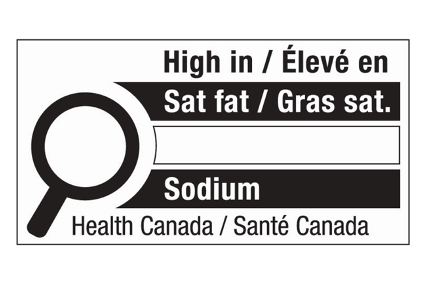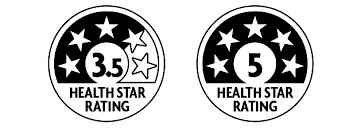Health Canada has unveiled a new mandatory front-of-package nutrition label featuring a magnifying glass, designed to highlight foods high in saturated fats, sugars and/or sodium.
The food industry will be given until 1 January 2026 to make these packaging changes. The delayed enforcement date is meant to reduce immediate compliance costs and give businesses a chance to potentially reformulate products.
A front-of-package warning label is required on:
- Prepackaged foods that meet or exceed 15% of the maximum daily value (DV) for saturated fats, sugars, or sodium (e.g., deli meats, soups, frozen desserts, puddings)
- Prepackaged foods with a small serving size (less than 30g or 30mL) that meet or exceed 10% of DV for saturated fats, sugars, or sodium (e.g., pickles, salad dressing, cookies, breakfast cereals).
- Prepackaged meals with a serving size of more than 200g that meet or exceed 30% of DV for saturated fats, sugars, or sodium (e.g., pizza products, frozen lasagne, meat pies)
Exemptions
Certain food categories that have recognised health benefits are exempted, including fresh, frozen, canned or dried vegetables or fruits, 2% or whole milk, cheese, eggs, and foods with a healthy fat profile, such as nuts and vegetable oils. Other technical exemptions have been made for foods on which a symbol would be redundant, such as table sugar, butter, or salt.
Implications for the Australian market
Whilst we recognise that nutrition labelling is one of many effective tools to help individuals make informed purchasing decisions, the NRA considers this model to be overly simplistic and heavy-handed.
The Australian Health Star Ratings (HSR), though not without its issues, is far superior to the Canadian model.
- HSR takes into account baseline ‘risk’ nutrients, energy, saturated fat, sodium, and total sugars, as well as more ‘positive’ modifying components, such as dietary fibre and protein, plus healthy ingredients like fruits, vegetables, nuts and legumes, and is tailored across 6 food categories.
- HSR provides a graded system to allow for better product category comparisons, rather than a blanket warning.
- HSR participation is voluntary, but a large proportion of industry has already adopted the label (or committed to doing so in the future), repackaged and reformulated products without the need for heavy-handed regulations.



